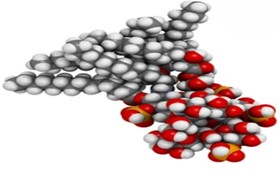Resources
-
Cell Services
- Cell Line Authentication
- Cell Surface Marker Validation Service
-
Cell Line Testing and Assays
- Toxicology Assay
- Drug-Resistant Cell Models
- Cell Viability Assays
- Cell Proliferation Assays
- Cell Migration Assays
- Soft Agar Colony Formation Assay Service
- SRB Assay
- Cell Apoptosis Assays
- Cell Cycle Assays
- Cell Angiogenesis Assays
- DNA/RNA Extraction
- Custom Cell & Tissue Lysate Service
- Cellular Phosphorylation Assays
- Stability Testing
- Sterility Testing
- Endotoxin Detection and Removal
- Phagocytosis Assays
- Cell-Based Screening and Profiling Services
- 3D-Based Services
- Custom Cell Services
- Cell-based LNP Evaluation
-
Stem Cell Research
- iPSC Generation
- iPSC Characterization
-
iPSC Differentiation
- Neural Stem Cells Differentiation Service from iPSC
- Astrocyte Differentiation Service from iPSC
- Retinal Pigment Epithelium (RPE) Differentiation Service from iPSC
- Cardiomyocyte Differentiation Service from iPSC
- T Cell, NK Cell Differentiation Service from iPSC
- Hepatocyte Differentiation Service from iPSC
- Beta Cell Differentiation Service from iPSC
- Brain Organoid Differentiation Service from iPSC
- Cardiac Organoid Differentiation Service from iPSC
- Kidney Organoid Differentiation Service from iPSC
- GABAnergic Neuron Differentiation Service from iPSC
- Undifferentiated iPSC Detection
- iPSC Gene Editing
- iPSC Expanding Service
- MSC Services
- Stem Cell Assay Development and Screening
- Cell Immortalization
-
ISH/FISH Services
- In Situ Hybridization (ISH) & RNAscope Service
- Fluorescent In Situ Hybridization
- FISH Probe Design, Synthesis and Testing Service
-
FISH Applications
- Multicolor FISH (M-FISH) Analysis
- Chromosome Analysis of ES and iPS Cells
- RNA FISH in Plant Service
- Mouse Model and PDX Analysis (FISH)
- Cell Transplantation Analysis (FISH)
- In Situ Detection of CAR-T Cells & Oncolytic Viruses
- CAR-T/CAR-NK Target Assessment Service (ISH)
- ImmunoFISH Analysis (FISH+IHC)
- Splice Variant Analysis (FISH)
- Telomere Length Analysis (Q-FISH)
- Telomere Length Analysis (qPCR assay)
- FISH Analysis of Microorganisms
- Neoplasms FISH Analysis
- CARD-FISH for Environmental Microorganisms (FISH)
- FISH Quality Control Services
- QuantiGene Plex Assay
- Circulating Tumor Cell (CTC) FISH
- mtRNA Analysis (FISH)
- In Situ Detection of Chemokines/Cytokines
- In Situ Detection of Virus
- Transgene Mapping (FISH)
- Transgene Mapping (Locus Amplification & Sequencing)
- Stable Cell Line Genetic Stability Testing
- Genetic Stability Testing (Locus Amplification & Sequencing + ddPCR)
- Clonality Analysis Service (FISH)
- Karyotyping (G-banded) Service
- Animal Chromosome Analysis (G-banded) Service
- I-FISH Service
- AAV Biodistribution Analysis (RNA ISH)
- Molecular Karyotyping (aCGH)
- Droplet Digital PCR (ddPCR) Service
- Digital ISH Image Quantification and Statistical Analysis
- SCE (Sister Chromatid Exchange) Analysis
- Biosample Services
- Histology Services
- Exosome Research Services
- In Vitro DMPK Services
-
In Vivo DMPK Services
- Pharmacokinetic and Toxicokinetic
- PK/PD Biomarker Analysis
- Bioavailability and Bioequivalence
- Bioanalytical Package
- Metabolite Profiling and Identification
- In Vivo Toxicity Study
- Mass Balance, Excretion and Expired Air Collection
- Administration Routes and Biofluid Sampling
- Quantitative Tissue Distribution
- Target Tissue Exposure
- In Vivo Blood-Brain-Barrier Assay
- Drug Toxicity Services
Biospecimen Information Management Protocol
GUIDELINE
- Driven by advances in molecular technologies, information management is critical to the molecular epidemiology research enterprise.
- Collation and analysis of the data associated with the collected specimens that support biomedical research require robust interoperability to allow maximum usage of the collections.
- A major part of the integrated informatics system is support for biospecimen collection, shipping, processing, storage, inventory and retrieval processes.
METHODS
Specimen Tracking
- Biorepository information systems should support inventory functions by tracking all phases of sample acquisition, processing, handling, quality control and distribution from collection site (patient / subject) to utilization (researcher).
- The inventory tracking should include significant events, such as thaws, loss, depletion and destruction of specimens, whether intentional or accidental.
- Restocking of returned, unused samples from the researcher, if allowed per protocol, must also be documented.
- The system should also be able to track any pre-existing, external biospecimen identifiers, such as vial type, and notations from hand-written vial labels.

Specimen Annotation
- It is important to be able to maintain tight integration of the demographic and clinical annotation of biospecimens, whether the data resides within the same data system or in physically distinct systems.
- Some study collections may include data-use agreements that require specimens to be de-identified before release from the biorepository for analysis.
- During the study planning process, the rules that govern specimen access are key factors when considering the use of pre-collected biospecimens in a study.
Proper Packaging and Shipping
- Depending on whether they are known to contain infectious agents, and the intended analyses, specimen shipments may be regulated as infectious substances or as diagnostic specimens.
- Packaging materials and equipment are available to preserve specimens under ambient, refrigerated and frozen conditions, including liquid nitrogen dry shippers that can preserve specimens frozen at or below -150°C for up to several weeks.
NOTES
- Biorepository information systems can report available space in the repository and assign and reserve space for incoming specimens. The location of a specimen should be tracked, but should not be used as part of the identifier naming convention, as locations of specimens may change in time.
- Due to the irreplaceable nature of many specimens collected for molecular studies, it is critical to protect them from destruction due to electrical outages, equipment failures, and similar problems. The most important systems to have in place are electrical back-up generators and equipment alarms.
- Laboratories and biorepositories should assume that all human biospecimens are potentially infective and biohazardous. All biospecimens should be treated as biohazards. In addition to taking biosafety precautions, biorepositories should adhere to key principles of general laboratory safety.
RELATED PRODUCTS & SERVICES
Reference
- Vaught JB and Henderson MK. (2011). "Biological sample collection, processing, storage and information management." IARC Sci Publ. (163), 23-42.
For research use only. Not for any other purpose.







